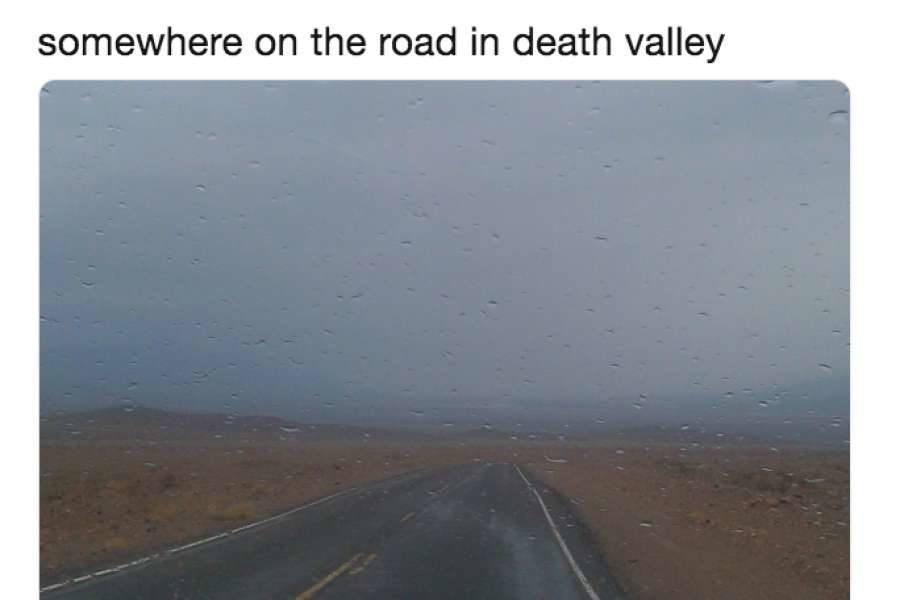Death Valley averages just 2.36 inches of rain a year. It picked up 0.64 inches of rain in the 24 hours ending 4 a.m. PST on Wednesday, or about 27 percent of its annual average. That 24-hour total is also more than double the park's March average rainfall of 0.3 inches.
The soaking rain came from a storm system tapping an atmospheric river as it moved into California Tuesday night and Wednesday.
Flooding swamped State Route 190 in the park between Furnace Creek and Cow Creek, the California Highway Patrol reported.
Flash Flood Warning continues for Furnace Creek CA until 8:45 AM PST pic.twitter.com/1MWODpUVCm
— @NWSFlashFlood (@NWSFlashFlood) March 6, 2019
Because water is not readily absorbed in the desert environment, even moderate rainfall can cause flash flooding in Death Valley, and it can be destructive.
Flash flooding can happen even where it is not raining. Normally dry creeks or arroyos can become flooded due to rainfall upstream.
This is the second time in less than a month that flooding has occurred in Death Valley National Park.
On Feb. 14, flooding closed two roads and caused damage to one of them when 0.44 inches of rain was reported.
Through 7 a.m. Wednesday, Death Valley has seen 1.56 inches of rain in 2019, or 66 percent of its annual average. Death Valley averages another 1.66 inches of rain per year from April through December.
Death Valley has seen impactful flooding before
Flash flooding and thunderstorms have been destructive fairly recently in Death Valley National Park.
On July 11, 2018, flash flooding was reported along Badwater Road. The flooding originated from Dante's View, a crest of the Black Mountains, which overlook Death Valley.
flash flooding along Badwater Road in @DeathValleyNPS @NWSVegas #TurnAroundDontDrown pic.twitter.com/rPxSGcQLc5
— Kevin (@FireRanger85) July 11, 2018
A thunderstorm produced heavy rainfall and strong winds in Death Valley National Park on Sept. 11, 2017. A roof was blown off a building and windows were blown out of four vehicles. The National Park Service estimated wind speeds of up to 100 mph.
One of the most notable flooding events took place over two weeks in October 2015. A series of slow-moving thunderstorms brought 1.3 inches of rainfall to Furnace Creek, the headquarters in the center of the park, making it the wettest October on record at that location.
The area near Scotty's Castle reported over 3 inches of rain and hail in a five-hour period, resulting in the worst flood event at the mansion since it was built in the 1920s. Rain from previous days had already saturated the ground and exacerbated the flooding.
According to the park service, about 1,000 miles of roads were closed in the park due to the flooding. Water and power lines and several buildings were also damaged.
On Aug. 15, 2004, torrential rain produced floodwaters up to 10 feet deep in portions of the park, and miles of roads were washed out and closed for months. Two people were killed and the damage was estimated at $20 million.
Flash flooding in November 1987 stranded more than 5,000 people, according to the National Weather Service.
Just three years earlier, on Aug. 15-16, 1984, heavy rainfall and runoff from nearby mountains closed all roads but one in Death Valley, and at least 37 cars were stranded.
In February 1976, days of heavy rainfall and persistent runoff resulted in a significant flash flood in Golden Canyon, south of Furnace Creek. The paved road through Golden Canyon was wiped out and is no longer drivable.






Reader Comments
to our Newsletter